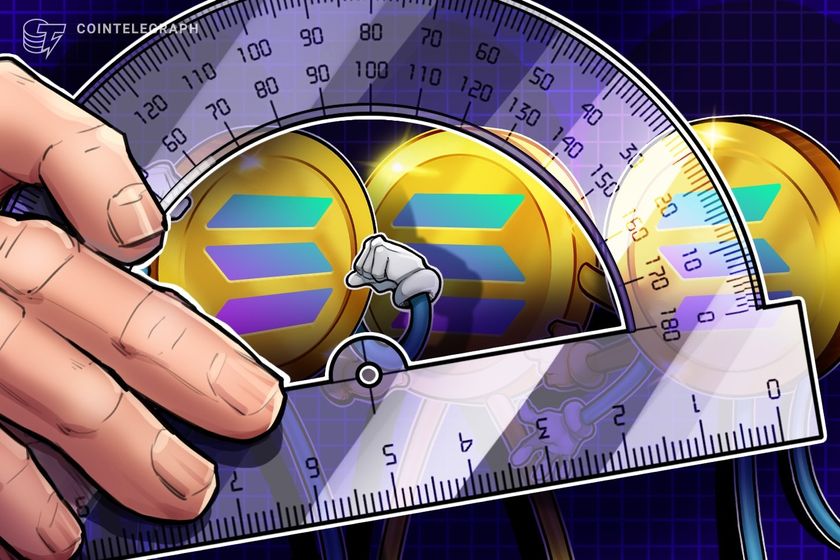In the ever-evolving world of cryptocurrency, Solana has recently garnered attention as its price appears to have stabilized around the 5 mark. The intriguing aspect of this situation lies in the large SOL token locks set to begin on March 1. The outcome of these sizable commitments will likely play a crucial role in determining the future dynamics of Solana’s market performance.
As one of the leading blockchain platforms, known for its high-speed transactions and lower costs, Solana has attracted a considerable following. Market analysts are watching closely—not only because of its price movements but also due to the implications that these token locks might have on liquidity and investor confidence. Large token locks can affect supply and demand in significant ways, and understanding their potential impact is vital for stakeholders within the cryptocurrency space.
“The timing of these large SOL token locks may influence market sentiment, creating either stability or volatility based on how investors react,” noted one market observer.
The cryptocurrency market is notoriously unpredictable, and while there is speculation that Solana might have found a bottom, the forthcoming events could either solidify this belief or trigger new fluctuations. Prospective investors and enthusiasts alike will be closely watching the market’s response as token locking commences in March.
As we venture deeper into 2024, the developments surrounding Solana could serve as a barometer for broader trends within the cryptocurrency landscape. The interplay between significant token metrics and market reactions will continue to shape conversations in this vibrant digital economy.
Implications of Solana Price Trends and Upcoming Token Locks
The recent observations regarding Solana’s price and upcoming token locks can significantly impact investors and traders. Here are the key points to consider:
- Price Stabilization:
- Current price of Solana (SOL) around 5 suggests it may have reached a bottom.
- Identifying price bottoms can guide investors in timing their purchases.
- Upcoming Token Locks:
- Large SOL token locks starting on March 1 will play a critical role in price dynamics.
- Token locks are typically mechanisms that can influence supply and demand, potentially stabilizing the price further or initiating volatility.
- Market Sentiment:
- The interplay of locked tokens and price stabilization can affect investor behavior.
- Positive sentiment could lead to increased buying activity, while negative outcomes may spur selling.
- Impact on Investment Strategy:
- Investors should monitor the market around March 1 for potential shifts in Solana’s price trajectory.
- Strategic decisions may need to be made based on how the token locks are perceived by the market.
Understanding these dynamics can help readers better navigate investment decisions in the cryptocurrency landscape.
Understanding the Implications of Solana’s Price Movements and Token Locks
The current landscape for Solana is particularly intriguing, especially for investors keeping a keen eye on the cryptocurrency market. With the price appearing to stabilize around 5, there’s an air of cautious optimism. However, the impending large-scale SOL token locks set to commence on March 1 present a pivotal moment that could greatly influence market dynamics.
Competitive Advantages: One of the most significant advantages Solana holds in this scenario is its growing ecosystem. While it competes with Ethereum and other blockchain networks, Solana’s ability to handle a high throughput of transactions at lower costs positions it favorably. Investors may view the price stabilization as a sign of resilience, and the upcoming token locks might encourage more long-term holding, potentially reducing selling pressure. If these locks lead to increased confidence, they could catalyze a bullish trend, attracting more institutional investment and further solidifying Solana’s place in the crypto hierarchy.
Disadvantages: On the flip side, the token locks could simultaneously pose risks. If market sentiment turns negative, the locked tokens might create a supply crunch post-unlocking, leading to sudden volatility. Furthermore, the broader crypto market is rife with uncertainty, especially considering regulatory pressures and the fluctuating sentiment around Ethereum’s ongoing transition to Proof of Stake. Any adverse news associated with these factors could hinder Solana’s advancements, making it susceptible to panic selling.
Potential Beneficiaries: This scenario is particularly advantageous for long-term investors and those betting on Solana’s sustained growth. With robust developments and projects supporting its network, investors looking to gain exposure to a promising blockchain may find these potential price movements and token mechanics appealing. Conversely, traders seeking short-term gains may find the liquidity constraints posed by the token locks problematic, especially if they rely on rapid transactions.
Challenges Ahead: Moreover, Solana’s competition is not standing still. Projects like Avalanche and Cardano are continuously evolving and may capitalize on any perceived weakness within Solana’s framework. This race for dominance in the layer-1 blockchain space means that developers and investors must remain vigilant and adaptable as the situation unfolds.















